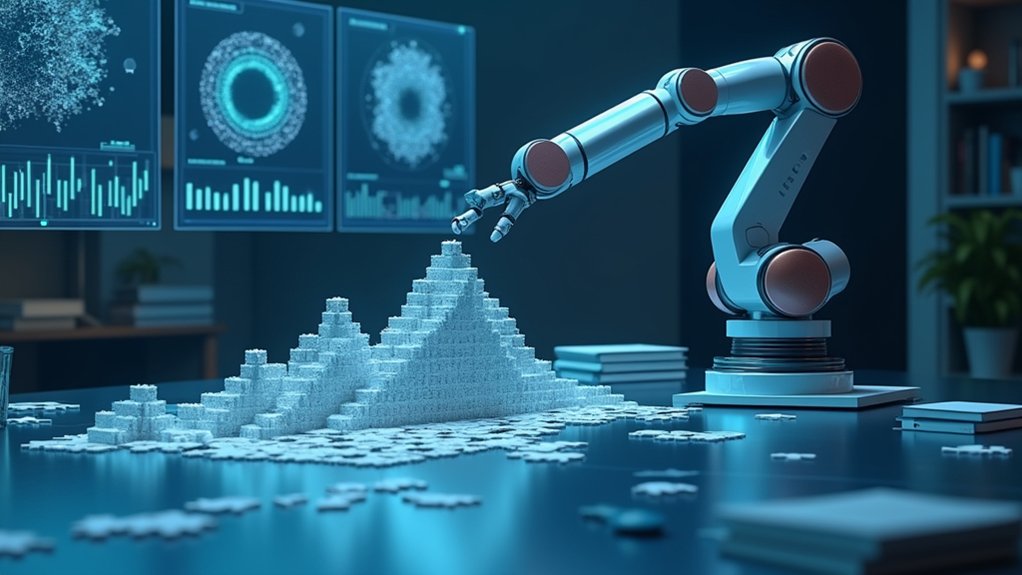AI is diving headfirst into self-teaching, mastering skills through trial and error like some rebellious kid skipping the tutor. In reinforcement learning, AI systems adapt in dynamic worlds, learning autonomously through interactions. Moreover, reinforcement learning employs trial and error to accumulate data and improve over time. No pre-fed data here; it’s all about an agent making decisions, earning rewards or slaps on the wrist.
Imagine this: the AI stumbles, gets feedback, and improves. It’s raw, efficient, and, honestly, a bit cheeky—skipping the boring lectures for real-world brawls. Reinforcement learning thrives in complex environments by optimizing decisions to achieve long-term goals.
AI stumbles, grabs feedback, and levels up—raw, efficient, and cheekily ditching lectures for real-world scraps.
Curriculum learning steps in next, ramping up the challenge like a gym coach pushing for gains. Models start simple, then tackle tougher tasks, blending with reinforcement for faster smarts. Introduced in 2009, it mimics human education or animal training, avoiding dead ends.
Oh, the irony—AI copying us to outpace us. This method boosts performance, converging on better outcomes without the fluff.
Then there’s knowledge distillation, where a bloated “teacher” model schools a slim “student” one. Self-distillation? That’s the model talking to itself, like a know-it-all muttering in the mirror. It cuts computing costs, speeds things up, but watch out for accuracy dips.
Sarcastic win: who needs brains when you can shrink them? Benefits include efficiency, though it hinges on that teacher’s ego.
Meta-learning lets AI “learn to learn,” adapting to new gigs with past tricks. It’s about generalizing from various tasks, excelling in few-shot scenarios or robotics. No hand-me-downs; this is self-improvement on steroids.
Autonomous systems take it further, operating with minimal human input, analyzing data and evolving. Self-supervised learning rounds it out, creating labels from raw data for vision or language tasks.
In reinforcement learning, agents often rely on Markov Decision Processes to model their environments effectively, enabling structured decision-making based on probabilistic states. Pretext meets downstream—AI’s bold education advance, messy and brilliant. Yeah, it’s happening, folks, and it’s equal parts thrilling and terrifying.




